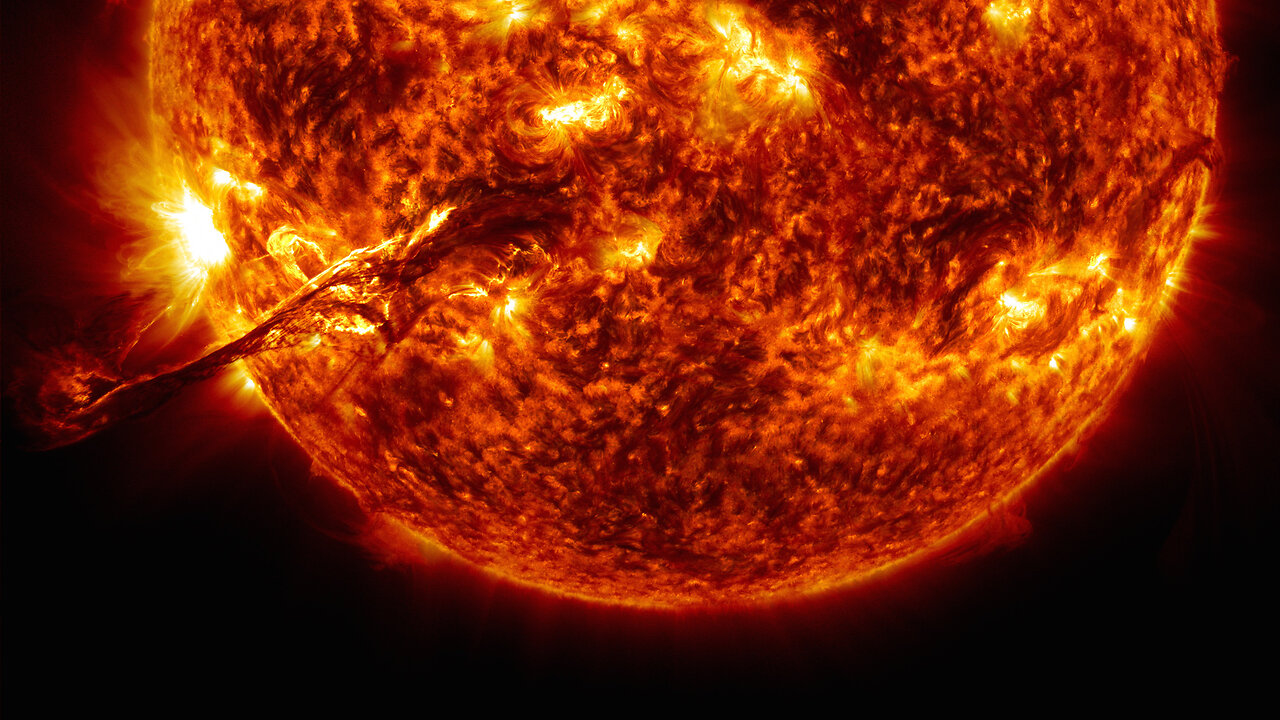Premium Only Content

THERMONUCLEAR ART – THE SUN IN ULTRA-HIGH DEFINITION (4K) VIDEO
The sun is always changing and NASA's Solar Dynamics Observatory is always watching. Launched on February 11, 2010, SDO keeps a 24-hour eye on the entire disk of the sun, with a prime view of the graceful dance of solar material coursing through the sun's atmosphere, the corona. SDO captures images of the sun in 10 different wavelengths, each of which helps highlight a different temperature of solar material. Different temperatures can, in turn, show specific structures on the sun such as solar flares, which are gigantic explosions of light and x-rays, or coronal loops, which are stream of solar material travelling up and down looping magnetic field lines. Scientists study these images to better understand the complex electromagnetic system causing the constant movement on the sun, which can ultimately have an effect closer to Earth, too. Flares and another type of solar explosion called coronal mass ejections can sometimes disrupt technology in space. Moreover, studying our closest star is one way of learning about other stars in the galaxy. NASA's Goddard Space Flight Center in Greenbelt, Md. built, operates, and manages the SDO spacecraft for NASA's Science Mission Directorate in Washington, D.C. All tracks are written and produced by Lars Leonhard. Released Sunday, November 1st, 2015 This video is public domain and along with other supporting visualizations can be downloaded from the Scientific Visualization Studio at: http://svs.gsfc.nasa.gov/13425
Credit: NASA's Goddard Space Flight Center/Michael Starobin/Genna Duberstein/Jefferson Beck/Scott Wiessinger If you liked this video, subscribe to the NASA Goddard YouTube channel: http://www.youtube.com/NASAExplorer Follow NASA’s Goddard Space Flight Center • Instagram http://www.instagram.com/nasagoddard • Twitter http://twitter.com/NASAGoddard • Twitter http://twitter.com/NASAGoddardPix • Facebook: http://www.facebook.com/NASA.GSFC • Flickr http://www.flickr.com/photos/gsfc
-
 19:55
19:55
The Rad Factory
13 hours ago $0.05 earnedCan I Fix My Fire Damaged F1 Car?
1051 -
 UPCOMING
UPCOMING
BEK TV
21 hours agoTrent Loos in the Morning - 8/01/2025
75 -
 LIVE
LIVE
The Bubba Army
20 hours agoHulk Hogan had Leukemia? - Bubba the Love Sponge® Show | 8/01/25
6,194 watching -
 13:08
13:08
Dad Saves America
11 hours ago $0.56 earnedTeachers Unions Play Politics While Students Lag Behind - Poisoning of the American Mind: Pt 4
5.83K7 -
 20:05
20:05
Preston Stewart
11 hours ago $0.54 earnedCrimea Raid to Chasiv Yar Fight
3.4K6 -
 8:11
8:11
Millionaire Mentor
14 hours agoTulsi Gabbard and Leavitt DOUBLE-TEAM Kaitlan Collins in FIERY Exchange
3.38K2 -
 46:02
46:02
Coin Stories with Natalie Brunell
1 day agoWhat They’re Hiding About the Economy | Natalie Brunell with Danielle DiMartino Booth
35.6K5 -
 12:12
12:12
GritsGG
13 hours ago23 Warzone Wins in a Row! (Cypher AR)
77.7K -
 2:12:07
2:12:07
Side Scrollers Podcast
20 hours agoCULTURE SHIFT CAUSES MELTDOWNS + MASSIVE CENSORSHIP EFFORTS RAMP UP | SIDE SCROLLERS LIVE
19.9K8 -
 11:25
11:25
Nikko Ortiz
1 day agoMost Painful Fails
53.2K28